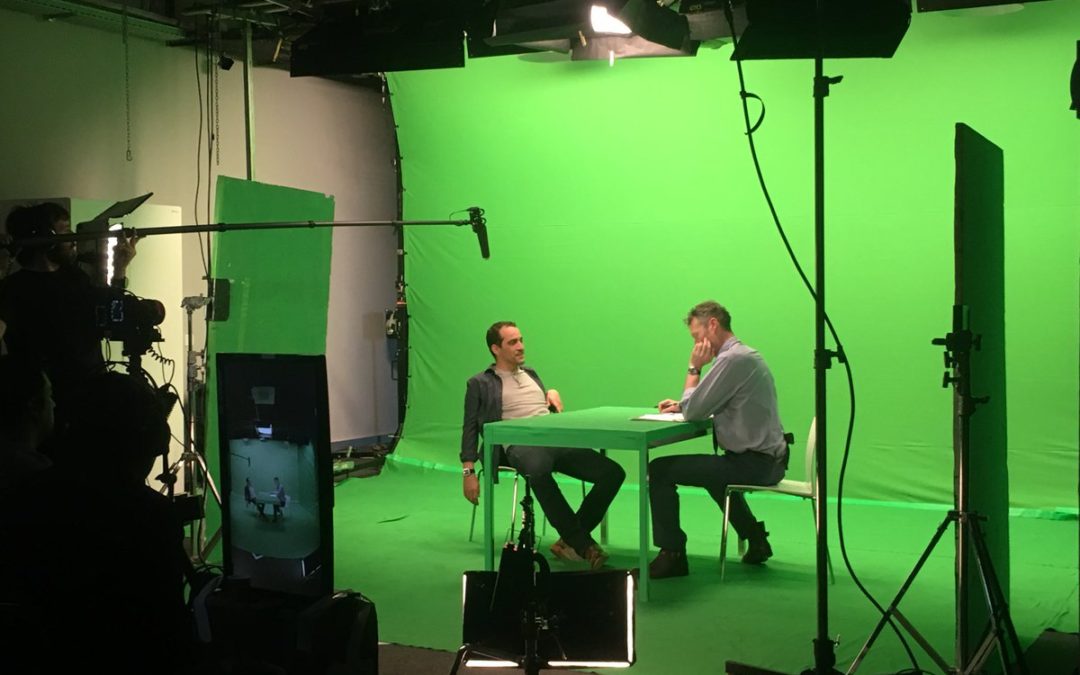
3D character creation for interactive VR
The third year of VRTogether is in full swing, and despite the recent pandemic scare our consortium is hard at work creating the technology and content for our third-year pilot. As we have described before, pilot 3 will involve an interactive scenario where users take on an active role trying to solve the mysterious murder of Elena Armova.
Pilot 1 involved a one-take interrogation scene observed by our users, and was created using three different content formats; 360 degree video, a 3D scene with billboard video, and a 3D scene with 3D characters. For this last option the actors were captured using a custom photogrammetry rig from Artanim with more than 90 cameras, after which their 3D mesh was reconstructed and subsequently rigged and animated using mocap data. The three formats allowed us to evaluate their tradeoffs in a VR context. The results indicated that in general the video billboards were preferred by users for their visual quality and natural appearance, but their main shortcoming is that user movement is very limited before such billboards no longer maintain their illusion.
Pilot 3 puts the users at the scene of the crime. Standing at and moving between different locations in Elena Armova’s apartment, they observe and interact with the characters in the scene. This, given the aforementioned shortcomings of a video billboard solution, means we will see the return of 3D characters. An additional downside of a billboard solution would have been the difficulty to have a seamless continuity of a variety of recordings. The interactivity inherent to the plot will see our characters respond to our user’s actions, wait for their response and progress along several possible paths. To seamlessly blend these various branches in our timeline, the only truly feasible option is to opt for 3D characters, driven by a full performance capture (motion capture for the full body including the fingers and face).
Having evaluated the 3D characters of Pilot 1, the consortium wanted to aim for a higher visual quality for Pilot 3. While a commercial 3D photogrammetry solution has been considered, both financial and scheduling constraints made this impractical. Luckily content creation solutions have not stopped evolving over the last few years, among which Reallusion’s Character Creator ecosystem – as well as other tools – which will be used to create our 3D characters. Characters created with the tools in this ecosystem are easily animated in real-time 3D engines such as Unity, by motion capture data from the body and hands all the way to facial animation.
Besides executing the motion capture, Artanim and its artists have taken on the task of creating our high quality virtual characters. The first step in the process is the collection of as much reference material as possible. The COVID-19 pandemic made taking in-studio headshots impossible, but some of the actors involved were already photographed as a part of pilot 1, while others supplied as much reference material as they possibly could. This includes high quality photos of their head from all angles, full body shots, as well as a set of body measurements to make sure their virtual counterparts match their own morphology. Ensuring a close match between the two also simplifies the retargeting stage while post-processing the motion capture.

Reference headshots of actor Jonathan D. Mellor who plays the character of Sarge.
Modern AI approaches have evolved quite significantly in recent years, leading to major advances in image processing in general, and obtaining 3D information from monocular views in particular. These developments find their way into content creation tools such as Character Creator’s Headshot AI plugin used as a basis for our character’s heads. Such tools do a commendable job based on a single image from a single view, but the creation of a more correct likeness still involves quite a lot of manual work, taking the generated output as a basis, carefully modifying the obtained 3D mesh to more closely match our actors’ morphologies.

The AI-generated output (left) needs significant artist intervention to get a good likeness (right), in particular for faces with asymmetrical features.
This is then followed by the addition of hair geometry, textures, shaders and materials to get a final real-time VR ready result.

After the addition of hair, textures and material setup, Sarge’s head is complete.
Without the use of 3D scans, the creation of the body is still a largely artistic process. Starting from a basic avatar body, it is up to the artist to adjust the basis to the actor’s appropriate sizes, and to adapt or model 3D clothing and accessories – including meshes, textures and materials – to get a high quality end result.
The end result is a high quality 3D representation of our actors, which can be used in interactive real-time VR scenarios for an exciting immersive experience.







